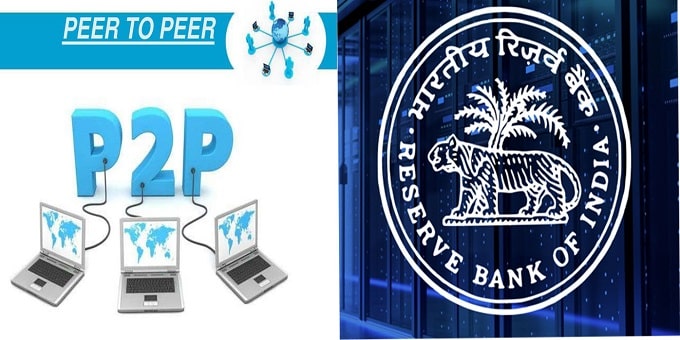On December 23, 2019,In a bid to protect the interest of consumers, India’s Central Bank, the Reserve Bank of India (RBI) has set a ₹50-lakh limit on the aggregate lending to all borrowers across all Non-Banking Financial Company – Peer to Peer (NBFC-P2P) lending platforms at a time determined.
Further, lender investing over Rs 10 lakh across P2P platforms should get a practising chartered accountant (CA) certify a minimum net-worth of Rs 50 lakh. Key Points:
Key Points:
i.In addition, RBI also decided to remove the current requirement of escrow accounts (an account where funds are held in trust whilst two / more parties complete a transaction ) to be operated by bank promoted trustee for transfer of funds having to be necessarily opened with the concerned bank.
ii.lenders also mandated to submit declaration on risks associated with lending transactions to P2P platforms.RBI also decided to prohibit all the transactions (including cash) done through bank accounts.
iii.Background: On December 5, 2019, RBI has increased the aggregate lending limits imposed on peer-to-peer (P2P) lenders to Rs 50 lakh from 10 lakh.
About P2P lending:
It is a method of crowdfunding & is used to take loans. Here individual borrowers are connected to lenders through digital platforms, and the platform just plays the role of a marketplace. With its help, the availability of loans is ensured to those who are unable to take loans due to non-fulfillment of conditions from financial institutions like banks etc. A total of 20 companies have registered with the RBI as NBFC-P2P lending platforms, as of October-end 2019.
NBFC-P2P:
It is an intermediary providing the services of loan facilitation via online medium to the participants, who enter into an arrangement with the intermediary to lend on it / to get the loan services provided by it.
About RBI:
Headquarters– Mumbai, Maharashtra
Formation– 1 April 1935
Governor– Shaktikanta Das
Deputy Governors– 4 (BP Kanungo, N S Vishwanathan, Mahesh Kumar Jain, 1 is yet to be appointed)





